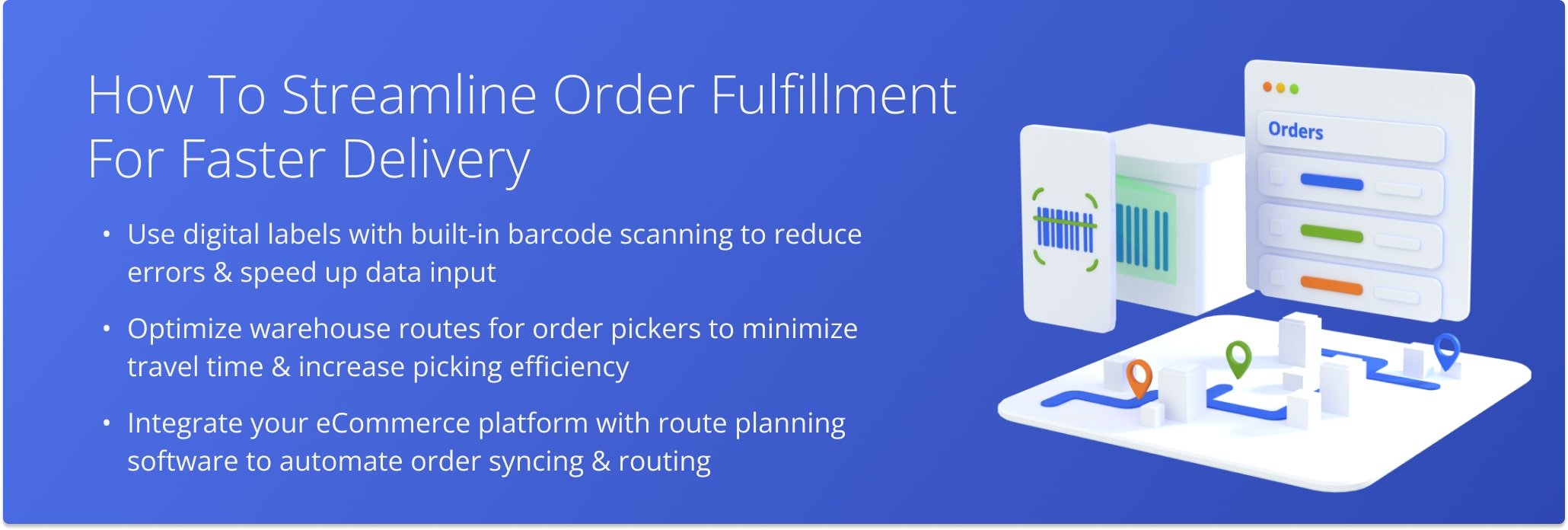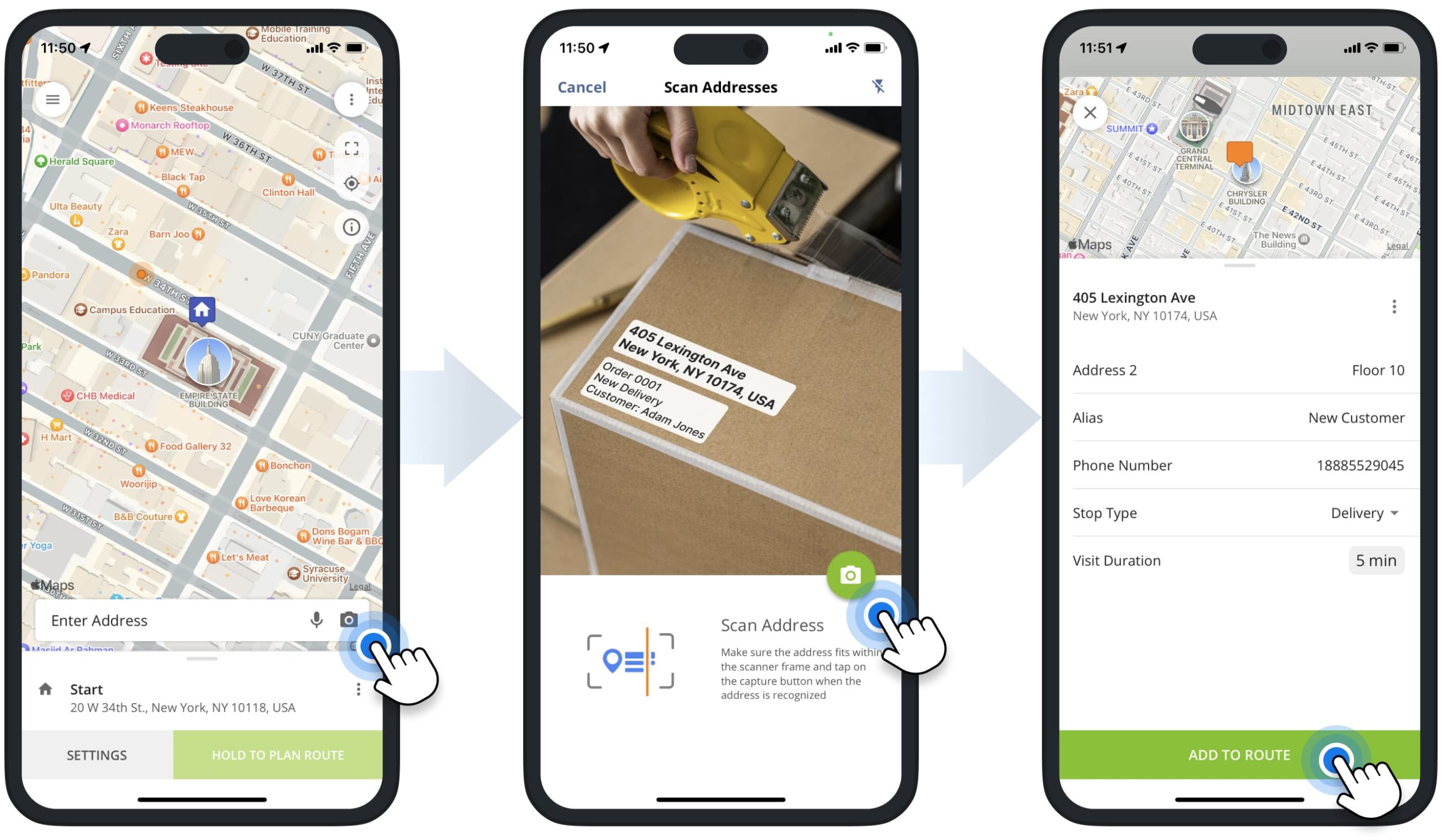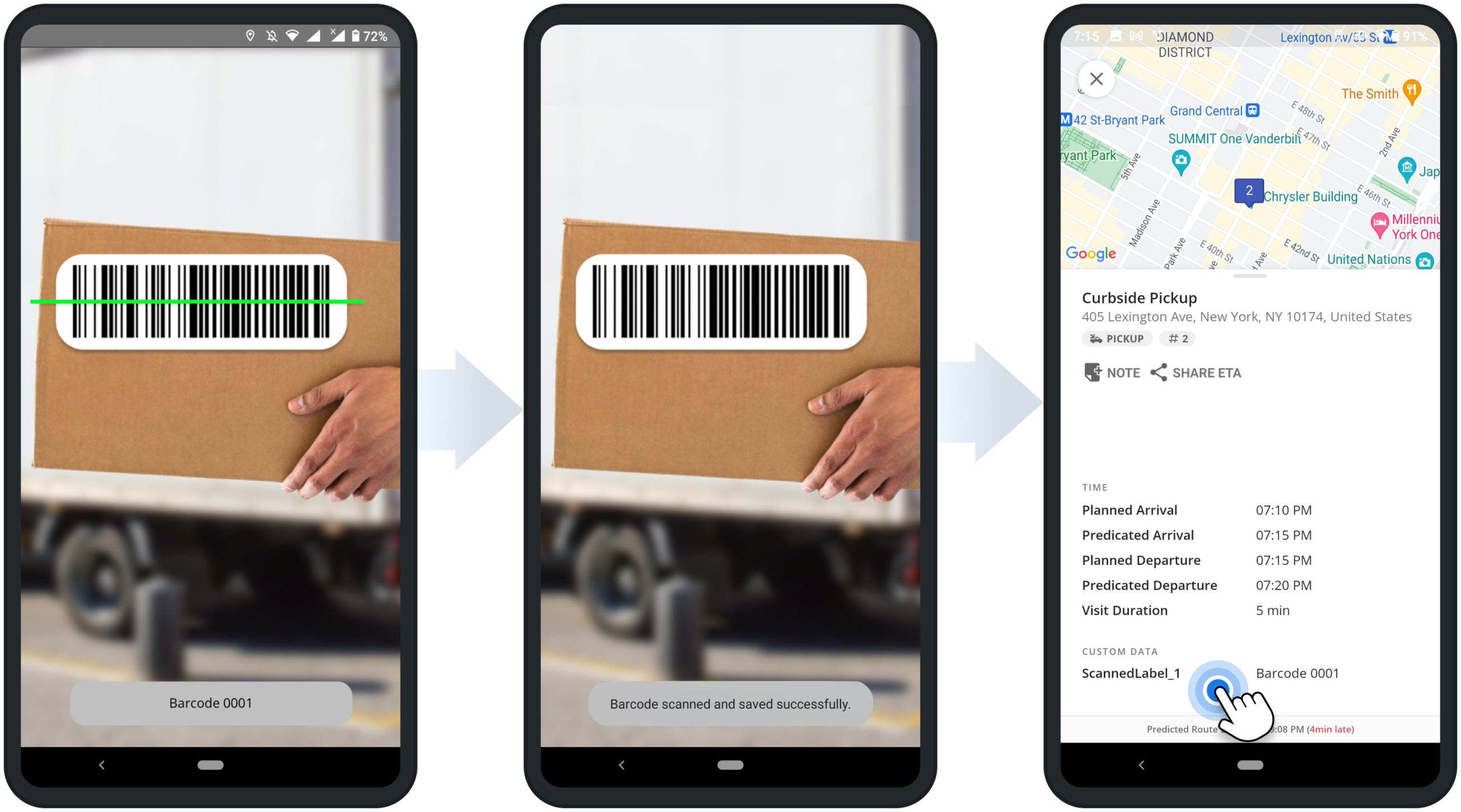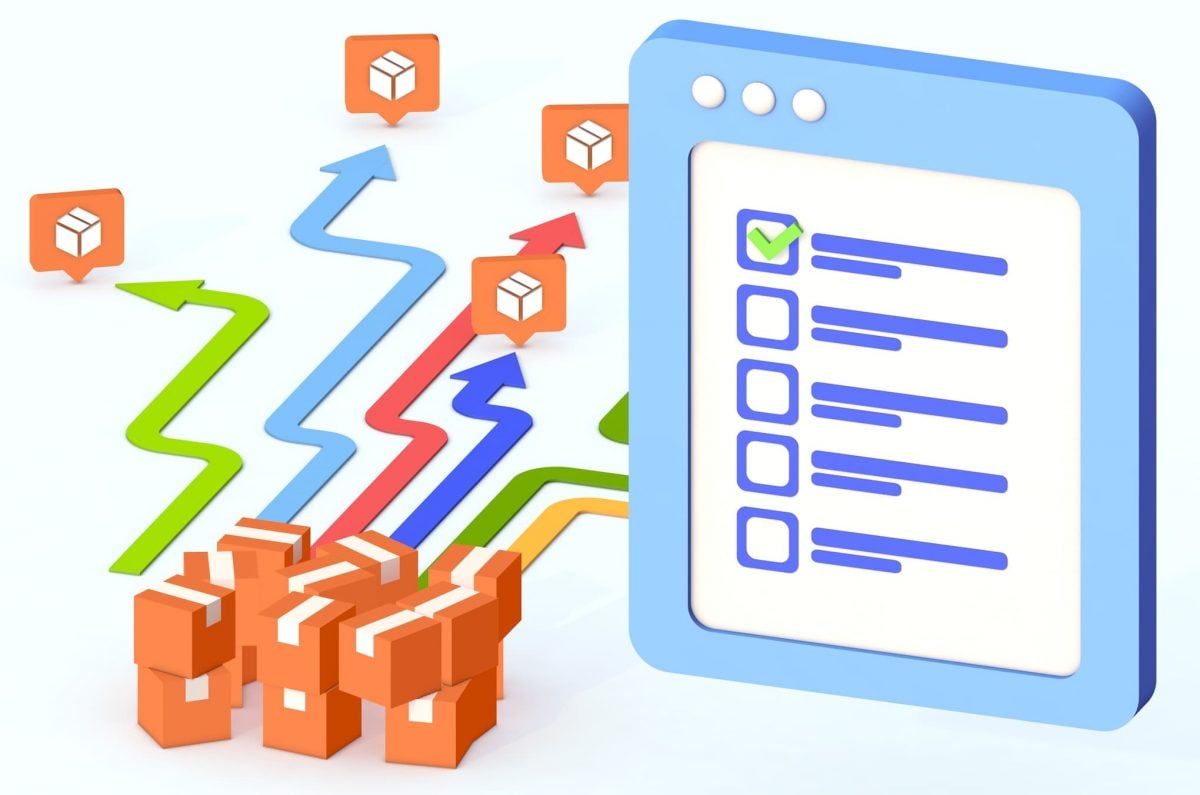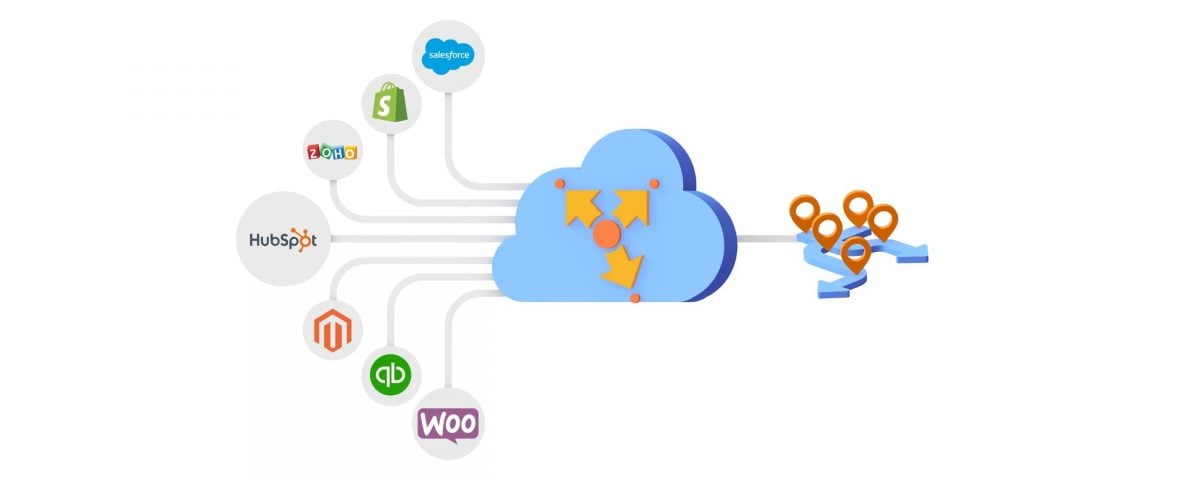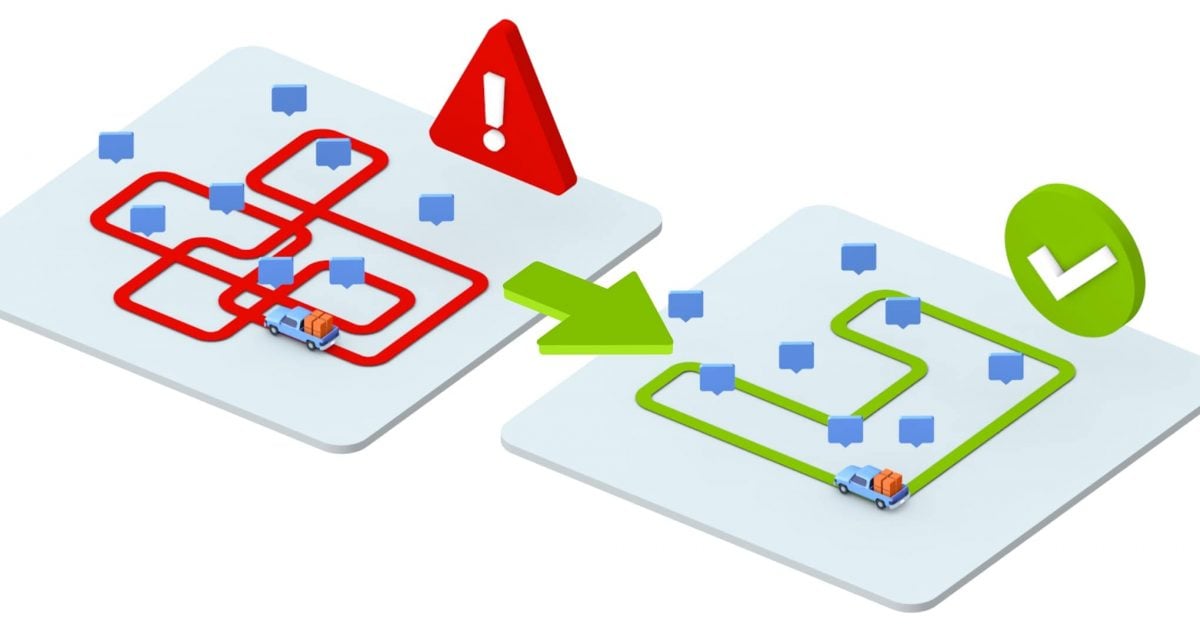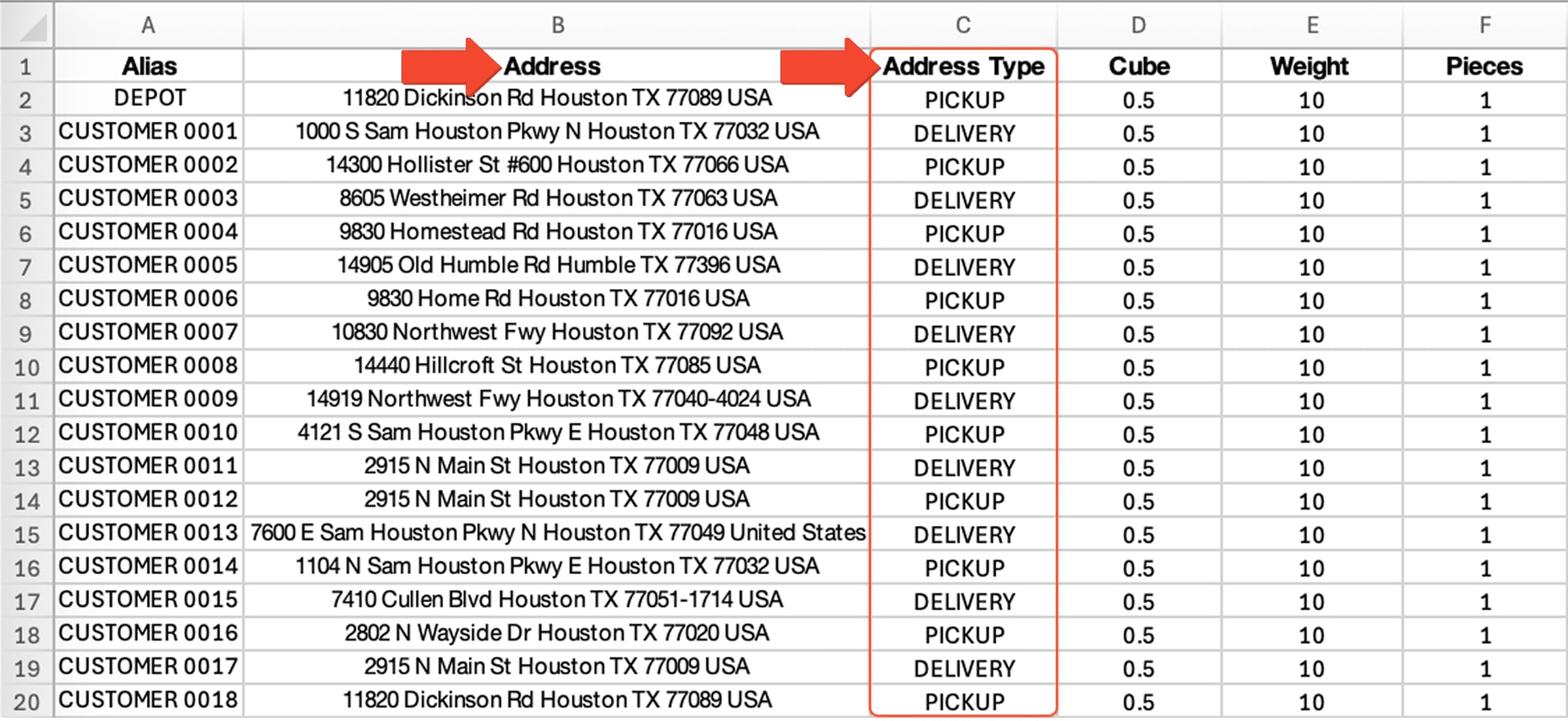How To Streamline Order Fulfillment Operations For Faster Delivery
What’s the secret behind Amazon’s lightening-fast order fulfillment? Strategic placement of fulfillment centers near dense populations and automation with warehouse robots have revolutionized their process. While smaller retailers can’t replicate this scale, they can still streamline fulfillment to speed up order delivery and boost efficiency. This guide explains how to improve order fulfillment operations through smarter routing, digital tools, and integrated software, helping your business compete in today’s fast-paced market.
Table of Contents
The Role of Order Fulfillment in Supply Chain Management
Order fulfillment is central to supply chain management. In e-Commerce, customer orders drive logistics operations. Once a purchase is made, order pickers locate the products in the warehouse, staff pack and load them into delivery vehicles, and last mile carrier deliver them to customers.
The goal of order fulfillment is to deliver products quickly and cost-effectively. Achieving this requires optimizing all six steps of the order fulfillment process.
What Are the Six Steps in the Order Fulfillment Process?
- Receiving inventory: Check shipments against the manifest and inspect products upon arrival.
- Storing inventory: Label and store products for easy retrieval in the warehouse.
- Picking inventory items: Generate pick lists and use digital labels to guide order pickers efficiently.
- Packing inventory items: Prepare products for shipment to customers.
- Order shipping: Load orders into delivery vehicles for in-house or outsourced last-mile delivery.
- Reverse logistics processes: Handle product returns efficiently to maintain customer satisfaction.
How To Make Order Fulfillment Operations More Efficient
A powerful routing solution can streamline order fulfillment. Route4Me helps logistics-heavy businesses optimize middle mile, warehousing, last-mile delivery, and reverse logistics. Here’s how to enhance your order fulfillment in five steps:
1. Switch to Digital Labels and Use In-App Barcode Scanner
Digital labels and e-ink barcodes save time and reduce errors. Instead of printing and replacing labels manually, you can update them instantly. Route4Me’s iOS and Android route planners include a built-in e-ink barcode scanner, making order picking faster, more accurate, and more efficient.
2. Optimize Routes For Warehouse Orderpicking
Plan warehouse routes to minimize walking and streamline order picking. By optimizing pick-and-pack paths, you speed up order fulfillment, reduce errors, and increase warehouse productivity.
3. Sync eCommerce Online Orders With Route Planner
Integrate your eCommerce platform with your delivery route planner to automatically sync new orders. Route4Me connects with Shopify, Magento, BigCommerce, WooCommerce, and more. Features include:
- Color-code eCommerce orders
- Progressive order statuses
- Ability to schedule and reschedule multiple orders at once
- Ability to create order territories
- Ability to dynamically insert orders into planned routes
- Ability to add delivery information to each order
4. Create Optimized Routes With Online Orders For Last Mile Delivery
Once orders are synced, map them into optimized multi-stop routes. Route4Me helps plan routes that consider:
- Customer availability
- Balanced workloads
- Number of delivery drivers
- Maximum route distance
- Order priority
- Number of boxes per delivery car
- Vehicle loading and carrying capacity
5. Optimize Reverse Logistics Routes For Product Returns
Combine product routing pickups and dropoffs in a single route to save time and resources. Route4Me optimizes reverse logistics routes quickly, simplifying the management of returns and improving customer satisfaction.
Start optimizing your order fulfillment processes with Route4Me today. Sign up for a get started!
Last Updated:
